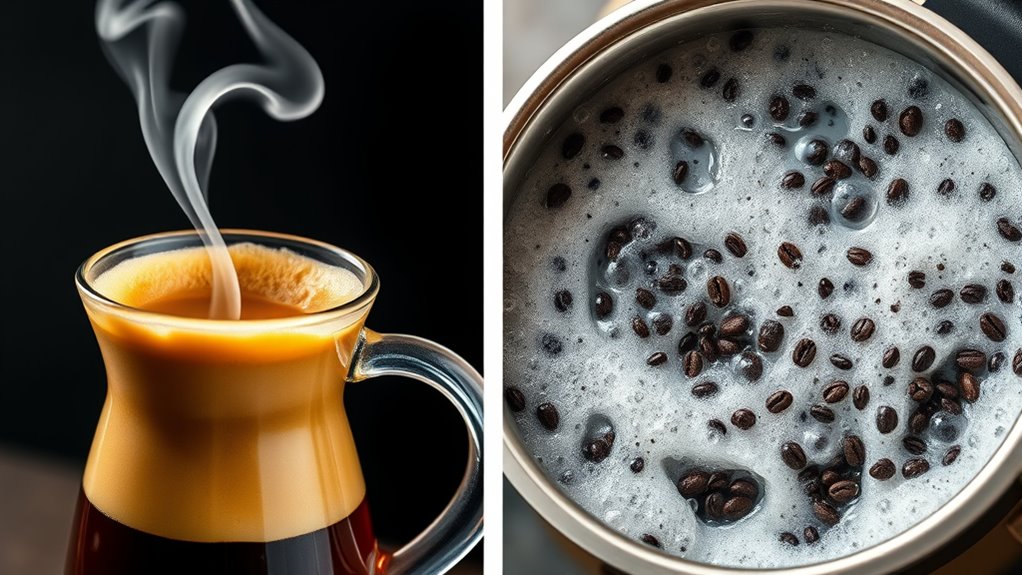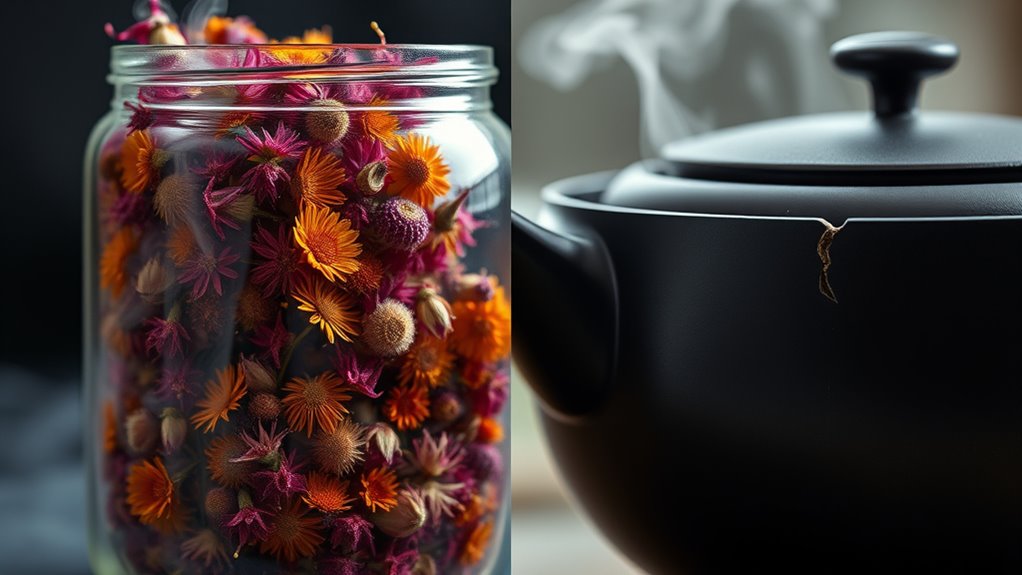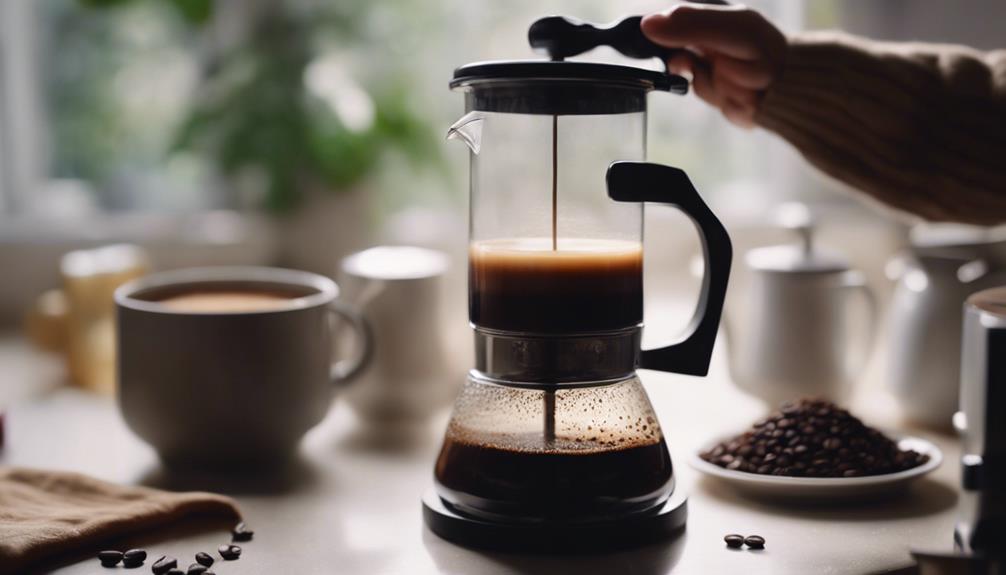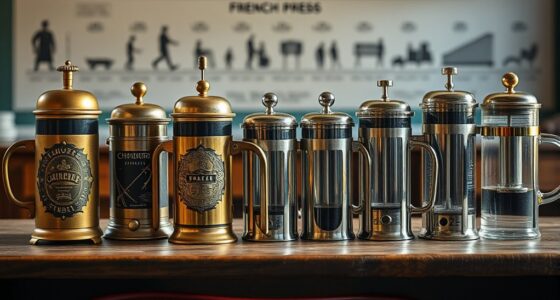When comparing stirring methods for “Bloom and Break,” you’ll find that gentle, consistent stirring promotes even nutrient distribution and minimizes stress on flowers, preventing breakage. More vigorous techniques can increase oxygenation but risk damaging delicate petals and stems, causing setbacks. The key is balancing agitation to boost bloom vibrancy without overstressing the plants. Keep exploring these stirring strategies to discover how the right approach can improve crop quality and reduce issues during growth.
Key Takeaways
- Stirring methods influence nutrient distribution, affecting bloom development and structural integrity of the plant.
- Gentle stirring promotes even growth without damaging delicate petals or stems.
- Rapid or vigorous stirring can cause stress, leading to breakage or uneven flowering.
- Comparing mechanical, manual, and aeration stirring reveals differences in plant resilience and bloom quality.
- Optimal stirring techniques balance oxygenation and nutrient mixing to support healthy bloom formation.

Have you ever wondered how growth can sometimes lead to unexpected setbacks? “Bloom and Break” explores the delicate balance between thriving and facing obstacles, revealing how periods of rapid development often come with challenges that test resilience. When it comes to cultivating flowers, especially in controlled environments, understanding the nuances of hydroponic techniques and flower harvesting methods becomes essential. These methods can profoundly influence not only the quality and quantity of your blooms but also how smoothly your process runs during peak growth.
Hydroponic techniques are increasingly popular for flower cultivation because they allow for precise control over nutrients and water delivery. Unlike traditional soil planting, hydroponics involve growing plants in nutrient-rich water solutions, which can accelerate growth rates and produce healthier, more vibrant flowers. As you experiment with different hydroponic methods—such as deep water culture, nutrient film technique, or ebb and flow—you’ll notice how each impacts your plants’ development stages. For instance, deep water culture provides constant oxygen to roots, promoting rapid growth, but it also requires careful monitoring to prevent issues like root rot. Being vigilant about pH levels and nutrient concentrations guarantees your flowers develop strong stems and full blooms without setbacks from deficiencies or imbalances. Additionally, understanding filtration systems can help maintain optimal water quality and plant health throughout the growth cycle.
Hydroponic flower cultivation offers precise control, accelerating growth and producing vibrant, healthy blooms through various innovative methods.
Flower harvesting methods are just as essential in the journey toward flourishing blooms. Timing is everything; harvesting too early or too late can diminish the flower’s visual appeal, scent, and longevity. When you decide to harvest, it’s necessary to choose the right tools and techniques to avoid damaging the delicate petals. Cutting stems at the right angle and under the right light conditions can extend vase life and preserve freshness. Additionally, post-harvest handling, such as proper cooling and hydration, helps maintain the flowers’ vitality. Sometimes, a gentle conditioning process involving hydration solutions can revive slightly wilted blooms, ensuring they reach the customer or display in prime condition.
However, rapid growth phases can sometimes lead to unforeseen challenges, like stretched stems or weak structures, especially if your hydroponic setup fosters overly vigorous growth. During these times, careful pruning and support can prevent breakage and promote sturdier development. Recognizing when your flowers are ready for harvest is equally critical—rushing the process might compromise quality, while delaying could result in over-mature blooms that have lost their vibrancy. Balancing these elements requires attentiveness and experience, but mastering them pays off with spectacular, resilient flowers that stand out.
In essence, whether you’re fine-tuning your hydroponic techniques or perfecting your flower harvesting methods, understanding how to navigate growth’s ups and downs is key. Each step demands precision, timing, and care, helping you turn rapid development into a beautiful, flourishing display rather than a setback.
Frequently Asked Questions
Which Stirring Method Is Most Energy-Efficient?
You’ll find that the most energy-efficient stirring method depends on your specific setup, but generally, automated stirring systems tend to save energy by reducing scaling challenges and optimizing mixing speeds. Automation opportunities allow you to adjust stirring precisely, avoiding wasteful energy use. By investing in automated solutions, you can improve efficiency, minimize maintenance, and better handle scaling challenges, making your process more sustainable and cost-effective in the long run.
How Do Stirring Methods Affect Product Consistency?
Imagine a gentle breeze weaving through a meadow, creating a sense of harmony. Stirring methods influence product consistency by controlling mixing speed, ensuring uniformity and quality. Faster mixing can blend ingredients more thoroughly, but too rapid a pace might introduce inconsistencies. By carefully adjusting stirring techniques, you maintain a delicate balance that results in a smooth, evenly textured product, embodying the ideal harmony of uniformity and quality in your final output.
Are There Safety Concerns With High-Speed Stirring?
High-speed stirring can pose safety hazards like splashing, equipment damage, or injury. To prevent hazards, you should implement proper hazard prevention measures and guarantee thorough operator training. Training helps you understand the risks and handle equipment safely, reducing accidents. Always wear appropriate protective gear, follow safety protocols, and regularly check equipment to minimize dangers associated with high-speed stirring, keeping yourself and others safe.
What Maintenance Is Required for Different Stirrers?
Did you know that proper maintenance can extend a stirrer’s lifespan by up to 30%? For different stirrers, you need to follow specific cleaning protocols regularly to prevent contamination and guarantee efficiency. Check for wear and tear on blades, seals, and motors, replacing parts when needed. Regular lubrication and calibration also help maintain peak performance, reducing downtime and costly repairs over time.
How Do Costs Compare Between Stirrer Types?
You’ll find that cost analysis varies between stirrer types, with mechanical stirrers often having higher initial costs but better equipment longevity, reducing long-term expenses. Electric stirrers may be cheaper upfront but can incur higher maintenance costs over time. Consider your production needs and budget, balancing initial investments against ongoing maintenance and durability to choose the most cost-effective stirring method for your operation.
Conclusion
Now that you’ve seen how bloom and break methods differ, you might wonder which truly sparks your passion. Will you embrace the delicate art of blooming, or will you break through with bold, decisive moves? The choice is yours, but remember, every method has its beauty and power. So, why not try both and see which method truly awakens your potential? After all, isn’t life about finding what makes you flourish?









